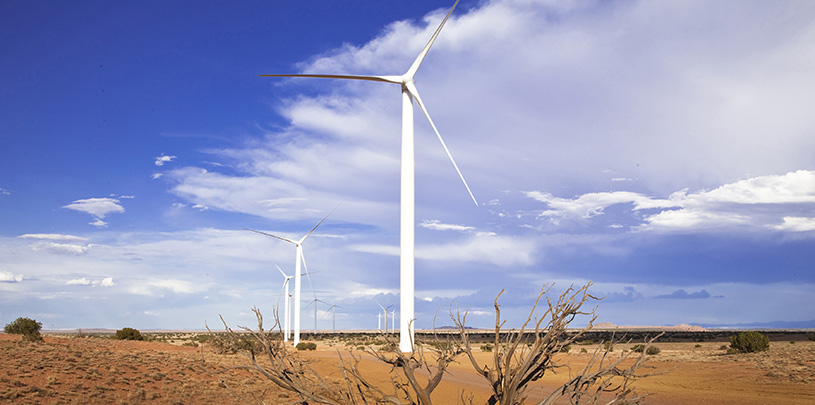
 by Rick Moore, Clean Energy & Efficiency Director
by Rick Moore, Clean Energy & Efficiency Director
Coal-fired power plants on the Colorado Plateau spew millions of tons of pollution into the air every year. For three decades, the Trust has worked to reduce pollution that blurs the plateau’s sweeping vistas. But reducing haze does not reduce carbon dioxide, a major greenhouse gas. Unfortunately, we’ve lacked viable legal handles for reducing carbon dioxide pollution.
Until recently.
In August 2015, the Environmental Protection Agency (EPA) established the Clean Power Plan, which regulates and reduces carbon dioxide pollution from existing power plants for the first time in history. While individual state reductions vary, this historic rule requires that by 2030, carbon dioxide pollution from all fossil-fuel power plants in the country be reduced by 32 percent compared to 2005 levels. Under the Clean Power Plan, each state has the option of creating its own plan to reduce emissions or accepting a federal plan developed by the EPA.
Unfortunately the Supreme Court put the Clean Power Plan on hold until an appeal by state and industry groups to stop it is resolved. The timing for resolving the appeal is unclear, but it could be awhile given the heated politics surrounding the choice of a new justice for the court.
But states can move forward to act on climate. This week, Oregon passed a groundbreaking law moving past coal-fired power and towards clean energy. And many states are continuing implementation of the Clean Power Plan because it’s the right thing for the climate and for the economy.
Arizona is at a crossroads. Prior to the Supreme Court’s decision, the Arizona Department of Environmental Quality (ADEQ) emerged as a national leader in reaching out to stakeholders while it was developing Arizona’s plan. Now the ADEQ is assessing whether to continue work on its plan or to wait until the appeal is resolved.
To us, the answer is clear. Even if the state and industry groups win their appeal, power plants will have to reduce their carbon pollution as the costs of climate-driven extreme weather events disrupt the economy and clean energy becomes more widespread and affordable. In 2015, $56 billion was spent on renewables and other energy-smart technologies in the United States, an increase of 8 percent over 2014. Wind generation spiked to 65 percent and solar electric grew 14 percent. Simply put, the economics of clean energy are rapidly changing, and the Colorado Plateau’s energy future will be in renewables. Now it’s just a question of planning for the transition and capitalizing on our state’s ample solar and wind resources.
Regardless of the Clean Power Plan’s fate, states with a clear plan for transitioning from coal-fired power plants to clean energy will be much better positioned to reap the economic, health, and environmental benefits of doing so—if they continue to develop their plans. That is why we urge the ADEQ to continue with the Clean Power Plan implementation. Regardless of the outcome of the legal challenge, preparing for our role as a national leader in clean energy is a win for Arizona and all Arizonans.
As 2024 draws to a close, we look back at five maps we created this year that give us hope for 2025.
Read MoreA small victory in the legal case challenging Daneros uranium mine, near Bears Ears National Monument.
Read MoreMugs, handmade soaps, high fashion, jewelry and more. There's something for everyone on your holiday shopping list.
Read More